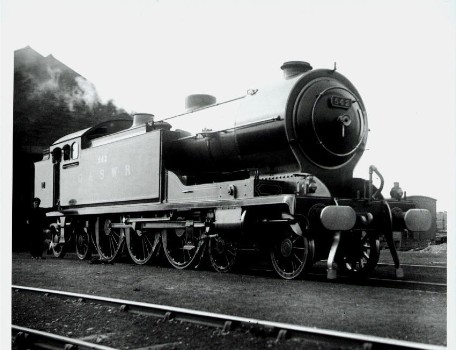
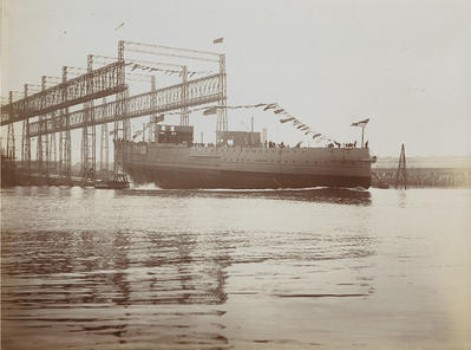
Above: Images of Glasgow's main industries in the late 1800s.
Glasgow began with a monastery built by St. Mungo in the 6th century. For many years, it was just a small salmon fishing and farming village at a crossing point on the River Clyde. The town became a burgh around 1190 and slowly grew bigger over four centuries.
In the early Middle Ages, Glasgow had a population of about 1,500 and was not considered one of Scotland's important towns. Towns on the eastern coast were much more prosperous (and bigger) because of their ability to trade with Europe. Glasgow, on the west coast, had much less opportunity and moreover had to compete with other towns downstream from its location on the Clyde. At that time, the village consisted simply of four main streets laid out in a cross.
By the 1400s, Glasgow was beginning to grow. Commerce increased when its wooden bridge across the Clyde was replaced by a stone bridge and the city was made a royal burgh. Instead of one general market, the city began hosting specific markets such as for salt, wool and linen, fruit and vegetable, meat, fish, horses, and grain.
The 1500s and 1600s were not particularly kind to Glasgow. The city was besieged in 1516, 1517, 1544, 1560, 1568, and 1570. Glasgow suffered from the plague in 1584 and again in 1646. Fire swept the city in 1652 and again in 1677. By the late 1600s, there were several industries in Glasgow, including soap boiling, sugar processing, rope making, glass making, cloth making, and porcelain making. There were also candle-making factories. By 1649, Glasgow passed Perth to become Scotland's fourth biggest trading center. Within 20 years, it had surpassed Aberdeen and Dundee to take the second place position behind Edinburgh.
As Scotland's economic picture improved during the 1700s, Glasgow grew steadily more important. Being situated on the west coast, it was not a major part of the European trade, but it was ideally placed for trade with the colonies. Glasgow merchants became very wealthy importing tobacco, rum and sugar and the Tobacco Lords built fabulous mansions within the city. It was during this time that Glasgow became famous for its fine linen. Cotton spinning became a major industry by the turn of the century and the city's population reached 12,000.
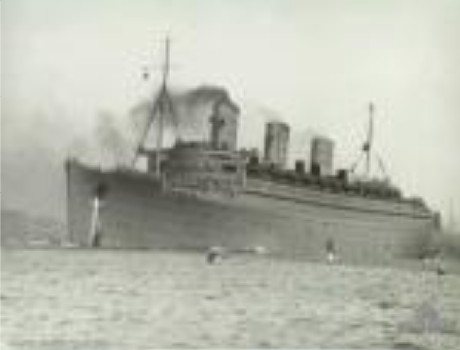
Easy access to natural resources (especially coal and iron ore) drove Glasgow's expansion during the Industrial Revolution. Aided by technological advances designed by local inventors such as James Watt, Glasgow became a center for heavy industry. The term Clyde-built became synonymous with quality and reliability and Glasgow shipped locomotives all over the world. Shipbuilding also flourished with the launching of the three Queens (Mary - above, Elizabeth, Elizabeth II) serving as the pinnacle of Glasgow's shipbuilding achievements.
Glasgow also developed manufacturing industries (e.g., soap-making, distilling, glass-making, sugar, and textiles). The textile industry benefited from Glasgow's easy access to coal (to fuel the steam-driven cotton mills and power-loom factories). Associated industries were also present, namely bleaching, dyeing, and fabric printing. Chemical making, brewing, paper, china and glass production also flourished. With Edinburgh not benefiting as strongly from industrialization, Glasgow soon became Scotland's largest city.
As the linen/textile industries began to wane in the 1900s, the city's heavy engineering and shipbuilding remained a strong positive force for many years. However, the cyclical nature of that industry also meant that Glasgow suffered from many economic downturns as well. Today, Glasgow's heavy industry focus has been largely replaced by a service economy and by high-tech and commercial businesses.
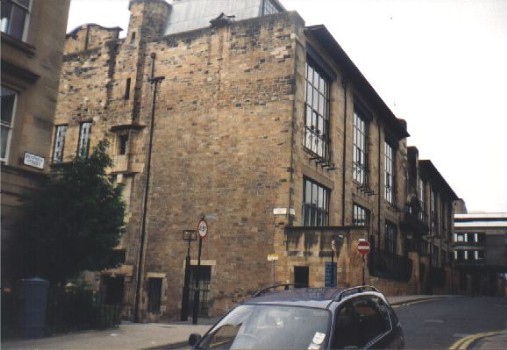
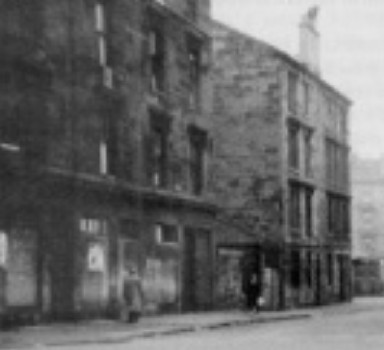
The rapid influx of workers into the city during the industrial revolution brought the accompanying social problems of overcrowding, poverty and disease. Glasgow's population trebled between 1755 and 1801 (23,000 to 77,000). It trebled again between 1801 and 1831 (to 202,000). Growth continued in the 1840s with a massive influx of Irish immigrants. For many, wages were low and employment was irregular. Most houses in the city were built for profit by private landlords who were not restricted by government regulations. The high cost of land meant that building upwards was the most viable option and tenement buildings (above) became the norm. The poorest, multi-generation families often lived in one room homes. Up to half of Glasgow's children died before their 5th birthday. Glasgow was described as possibly the filthiest and unhealthiest of all the British towns. Cholera spread through the city in 1849 and 1854, killing 3,777 people the first time and 3,885 the second.
Sources
Various web sites, including
A Brief History of Glasgow (http://www.localhistories.org/glasgow.html)
Gazetteer for Scotland (http://www.geo.ed.ac.uk/scotgaz/towns/towndetails338.html)
Glasgow's History (http://www.clyde-valley.com/glasgow/history.htm)
Further reading: Wighton Families in Glasgow